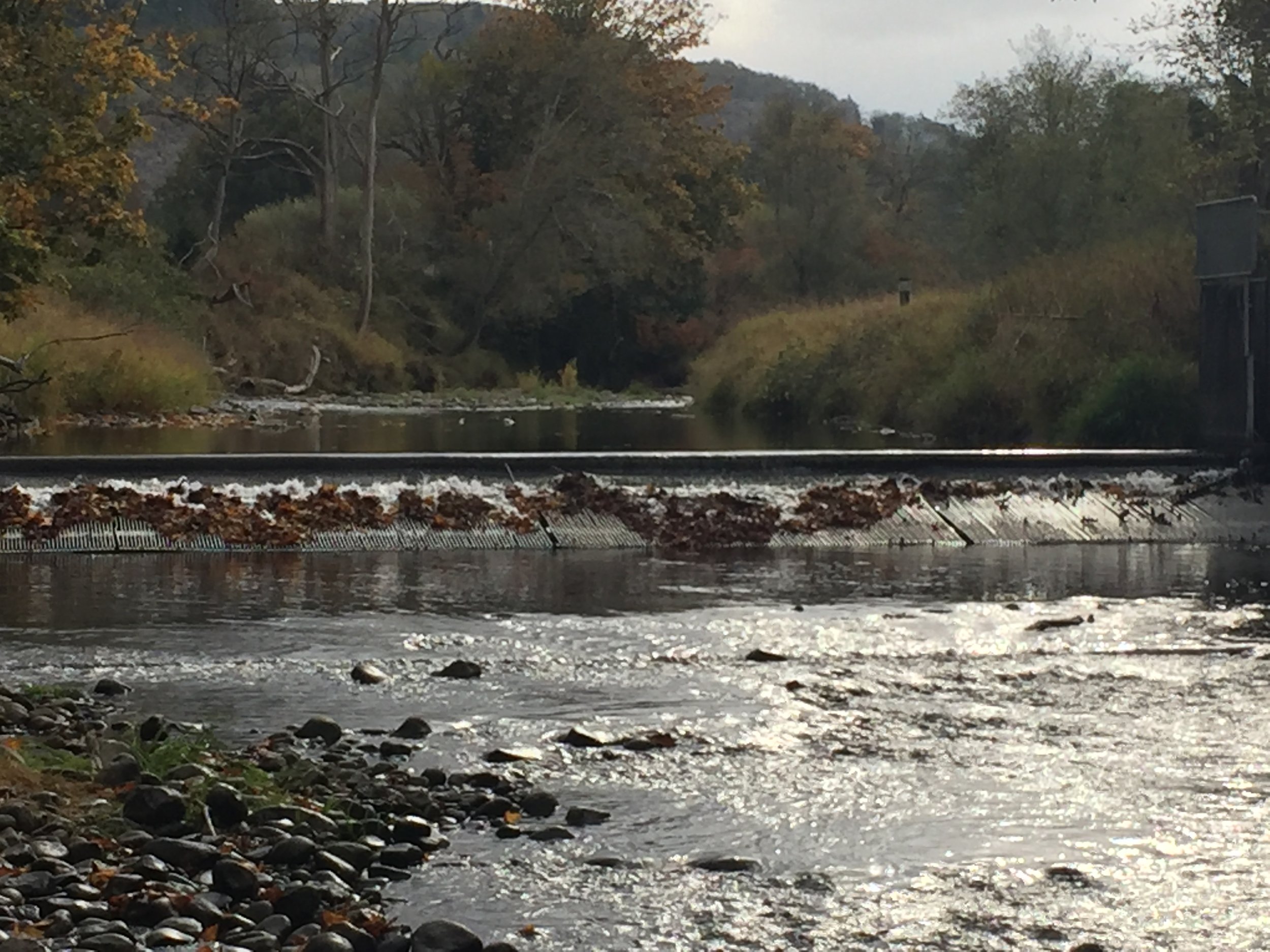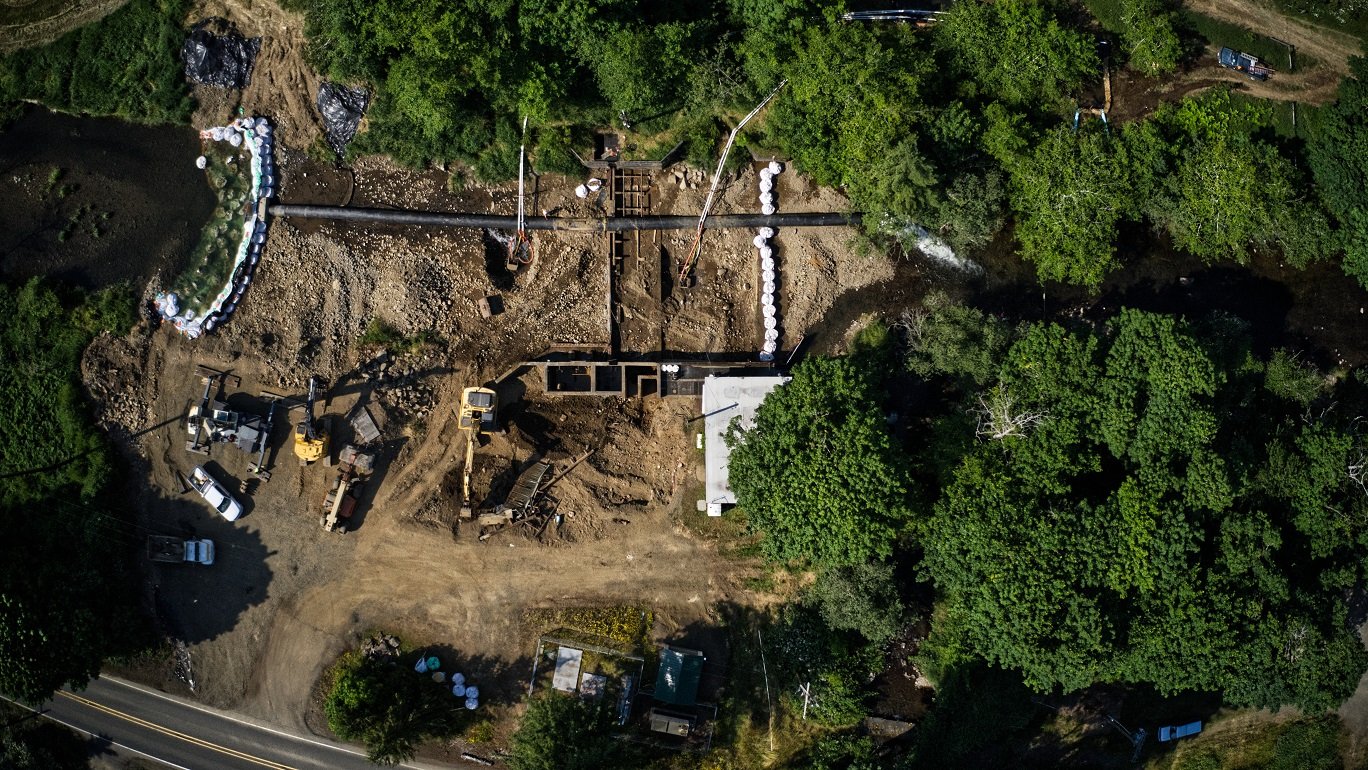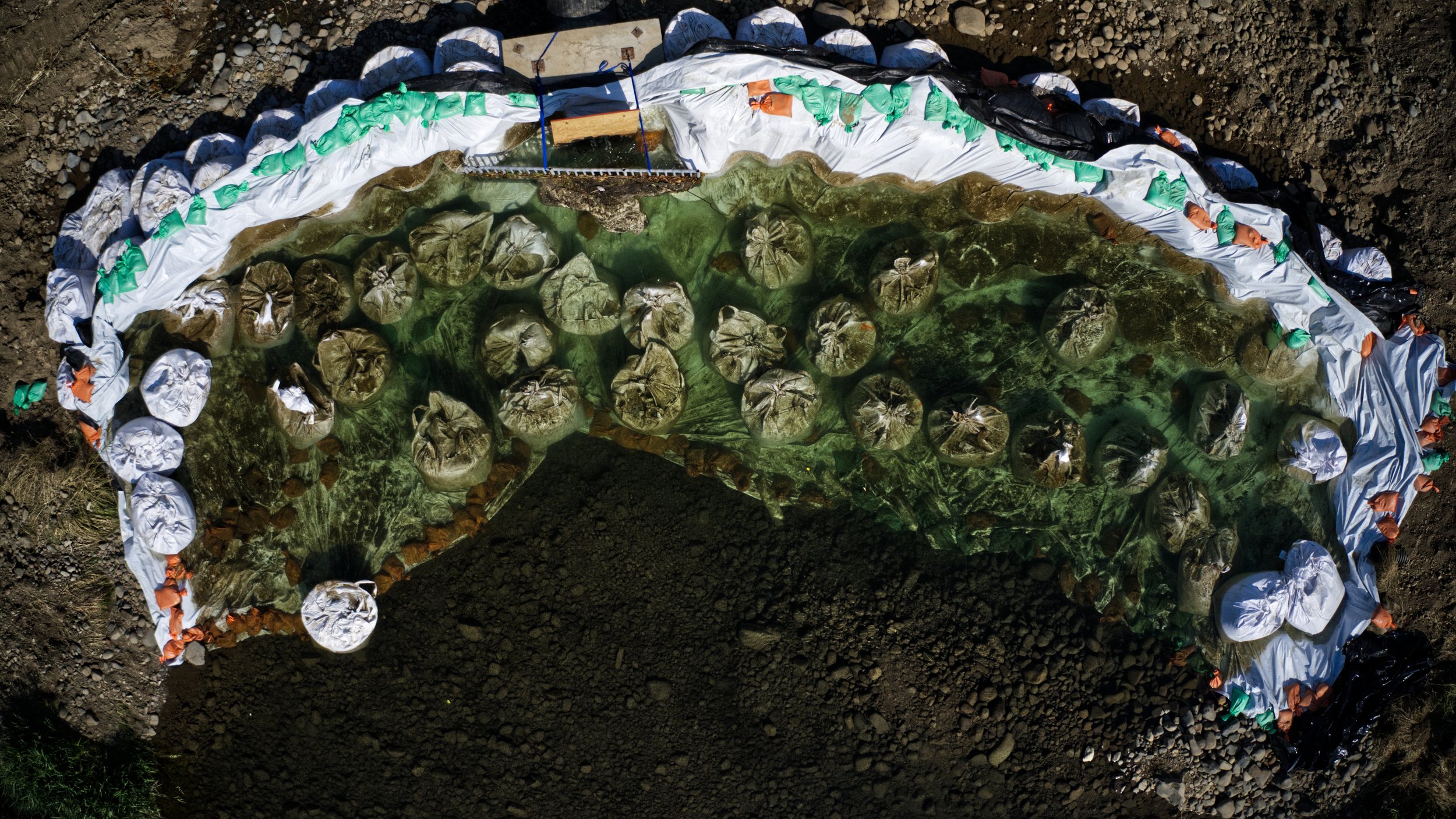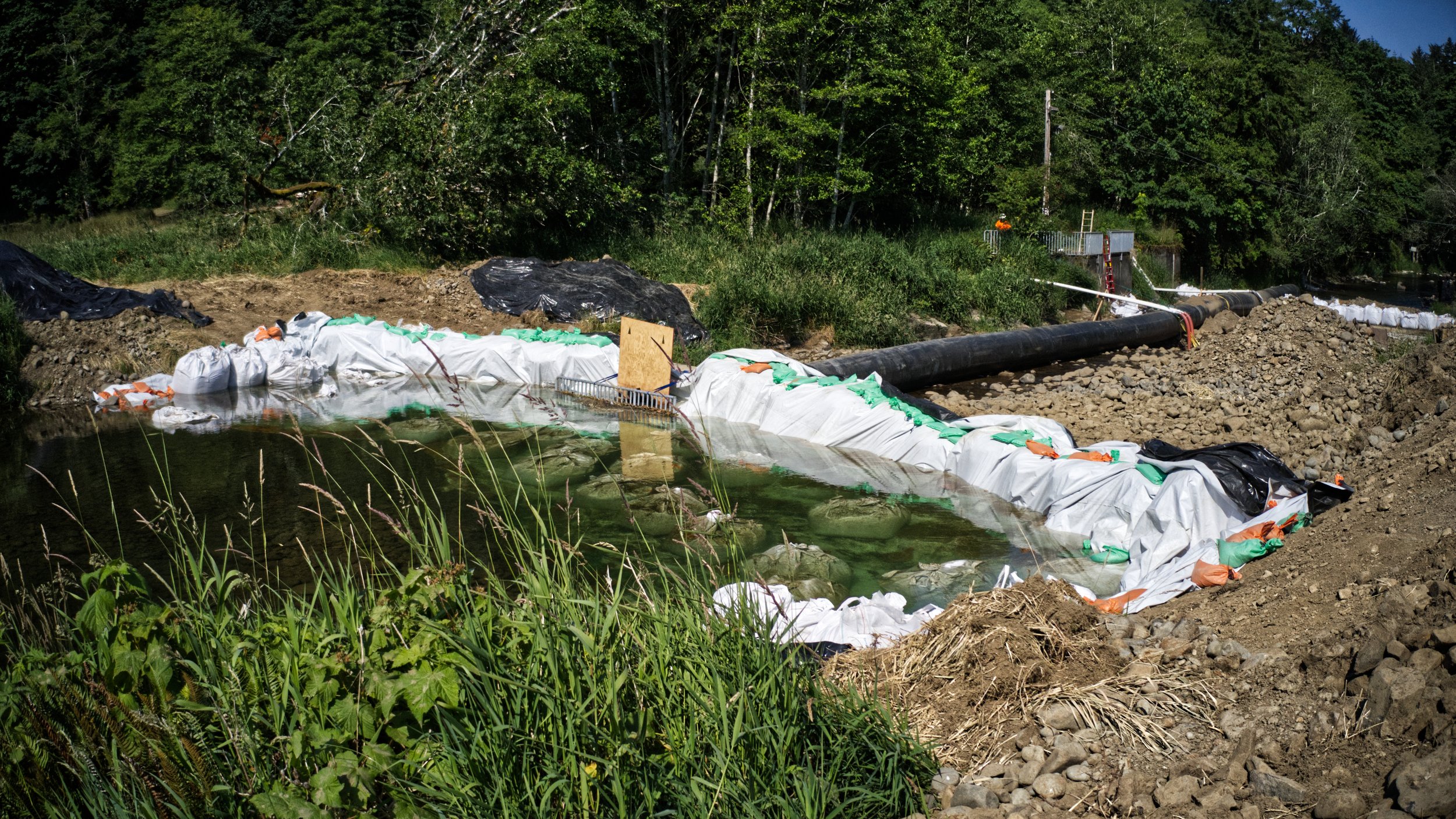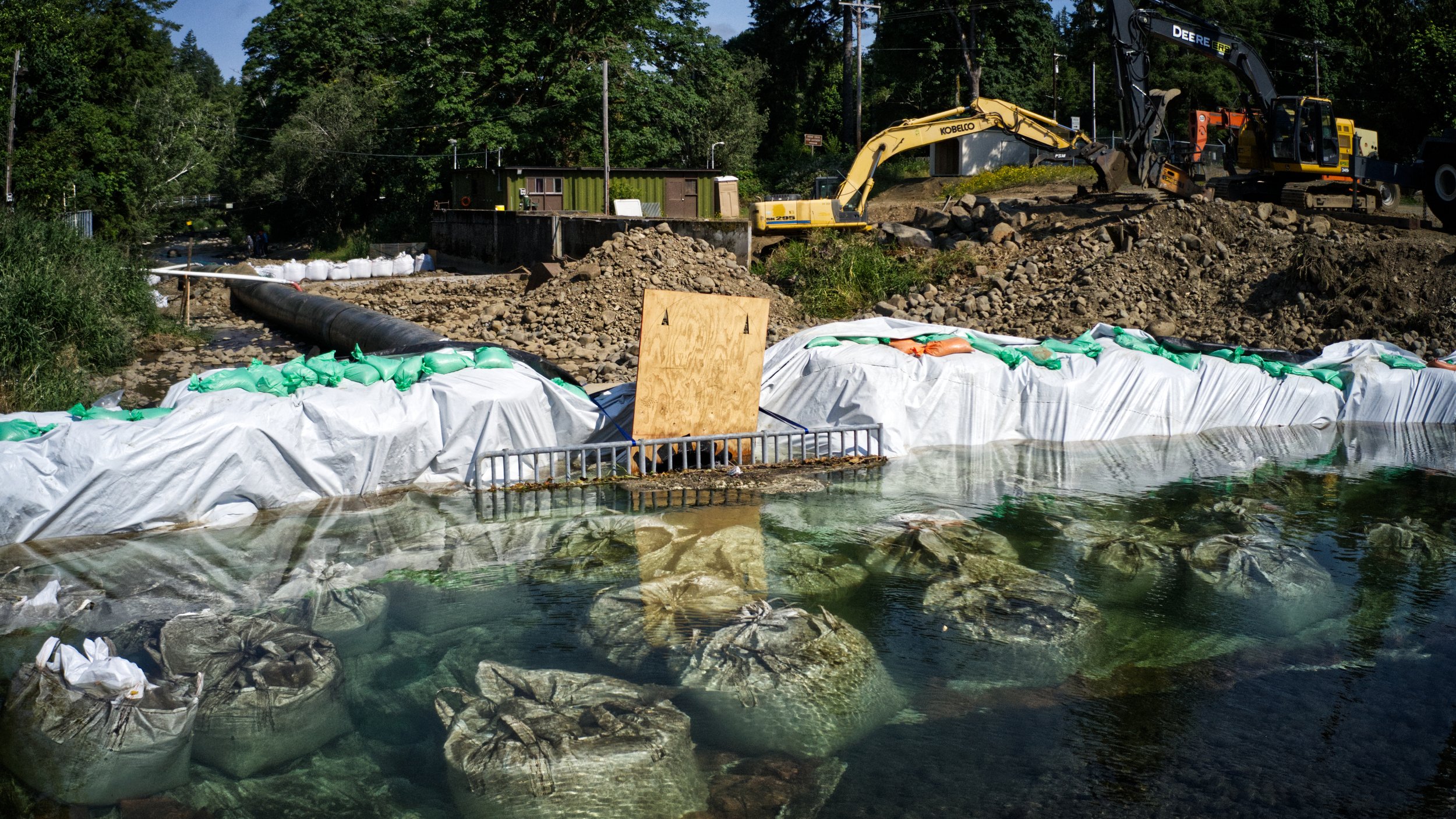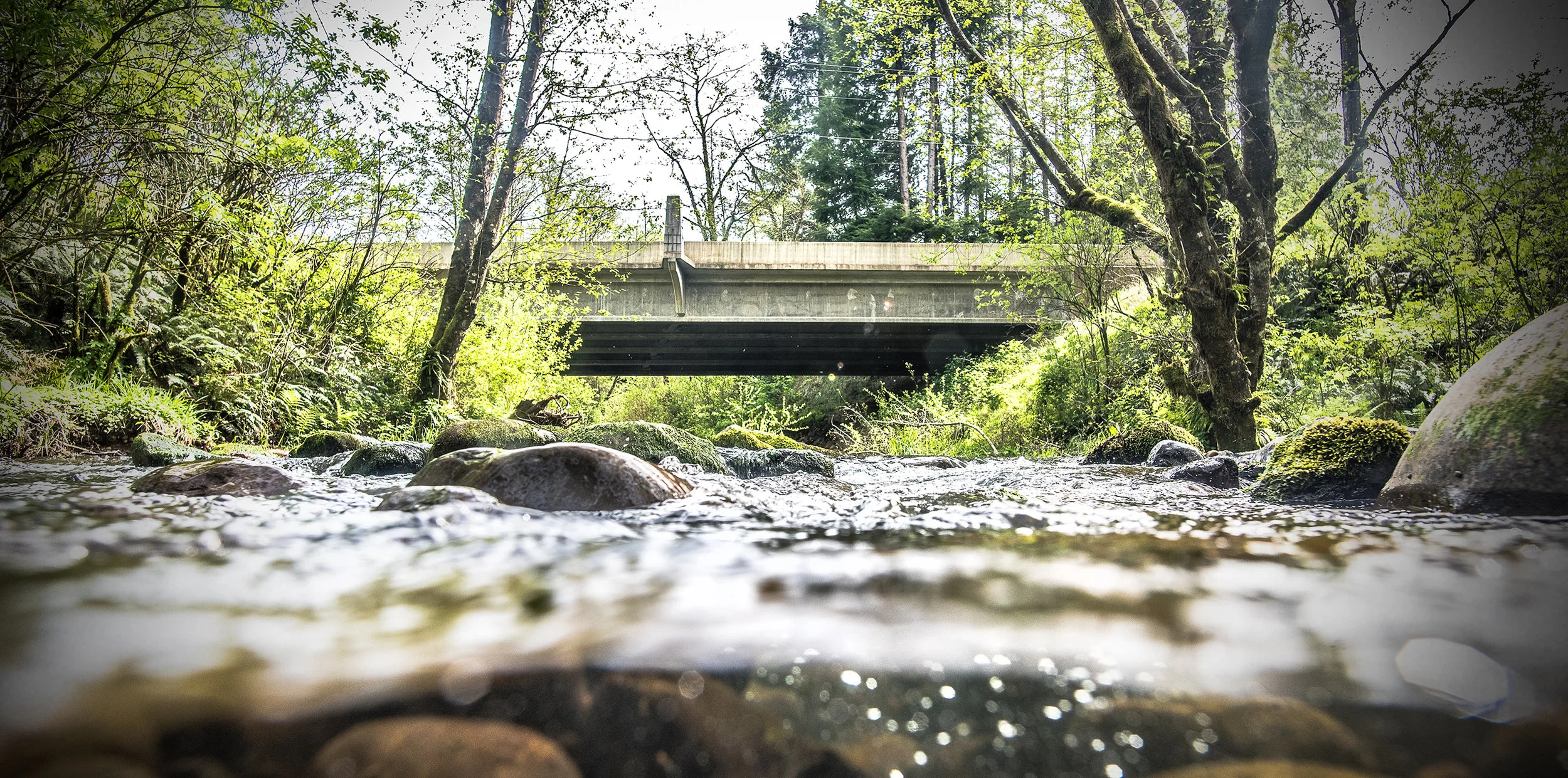Three Rivers Fish Passage replacement
The Three Rivers Fish Passage Replacement completed solution.
“ODFW is excited to see
this project completed — which will generate significant benefits to natural fish production and hatchery management.”
Project oVerview
Started: 6/21 Completed: 10/21
Three Rivers is a stunning tributary in the Nestucca basin of Oregon’s North Coast that supports Chinook and ESA listed coho salmon, steelhead and cutthroat trout, and Pacific and western brook lampreys. The Three Rivers system provides a variety of fish habitat types with streambeds rich in spawning gravels, numerous pools and side channels for rearing, and relatively cool stream temperatures.
A channel spanning weir associated with the Oregon Department of Fish and Wildlife (ODFW) Cedar Creek Hatchery was impeding fish passage to over fourteen miles of habitat of the Three Rivers system. The barrier consisted of a 15-foot-wide concrete apron and 3-foot-high stem wall the full width of Three Rivers with concrete abutments on either bank. Hydraulically operated picket panels that could be raised and lowered by ODFW staff were mounted below the stem wall. When picket panels are raised, the total barrier height was 9 feet. The barrier creates a water surface differential of ~4 feet in Three Rivers, depending on flows and picket weir position, and was in the up position for 9-10 months of the weir. This barrier is identified on the ODFW Statewide Fish Passage Priority List as one of the top two remaining barriers on the North Coast and it is a Salmon SuperHwy (SSH) priority barrier.
Completed Solution
This project removed the picket weir structure and replaced it with an adjustable Obermeyer weir, new fish ladder, and fish screen to improve conditions for wild, native migratory fish. Wild fish will now have unimpeded access during times when the inflatable replacement weir is lowered. During operation, there will be a functional fish ladder and passage facilities to allow for unimpeded upstream lamprey and juvenile salmonid volitional movements. Full year, downstream juvenile fish migration is improved for all species
Cedar Creek hatchery has been in production since 1925 and supports increased opportunities for sport, commercial, and tribal fishers consistent with the conservation of naturally produced fish. Fall Chinook, spring Chinook and summer and winter steelhead are all produced at Cedar Creek Hatchery. These programs support important harvest opportunities in the Nestucca River, Trask River, Siletz River, Wilson River, associated estuaries and ocean, and will improve both up and downstream fish passage conditions for adult and juvenile fish while allowing for management of hatchery programs. It also improves operational safety protocols for hatchery staff. The hatchery has an active visitor’s center that provides free self-guided tours to promote public outreach and education on salmon life history.
Benefits
Significant improvement for migratory fish access to the 14+ miles of spawning and rearing habitat.
Juvenile fish and all stages of lamprey will have year round passage through a new fish ladder designed to accommodate lamprey and juvenile salmonids.
The new weir will operate through a wider range of flows with less maintenance, less risk to downstream fish migration, and less risk of damage.
The new system will improve hatchery management, increase human safety, improve downstream passage for all species, and reduce holding and sorting time for wild fish.
Partners
OR Dept. of Fish and Wildlife, US Fish and Wildlife Service, US Forest Service, Resources Legacy Fund, Trout Unlimited, Nestucca Neskowin Sand Lake Watersheds Council
cost + funding
TOTAL PROJECT COST: $2.8 million+ in-kind
ODFW: $2.3 million
USFWS: $150,000
USFS: $150,000
RLF/TU: $200,000*
*This grant was made through the Open Rivers Fund, a program of Resources Legacy Fund supported by The William and Flora Hewlett Foundation.
Highly successful Partnership
A collaborative partnership led by Oregon Department of Fish and Wildlife worked to ensure that the project design, permitting, and construction were all successful.
The Oregon Department of Fish & Wildlife, the owner of the weir and hatchery facility, led the project and provided the majority of the funding.The US Fish and Wildlife Service provided technical review, permitting assistance, and cash contribution. US Forest Service provided funding and technical review. Trout Unlimited provided cash contribution through a grant from Resources Legacy Fund (RLF). Nestucca Neskowin Sand Lake Watershed Council provided local support during fish salvage.

